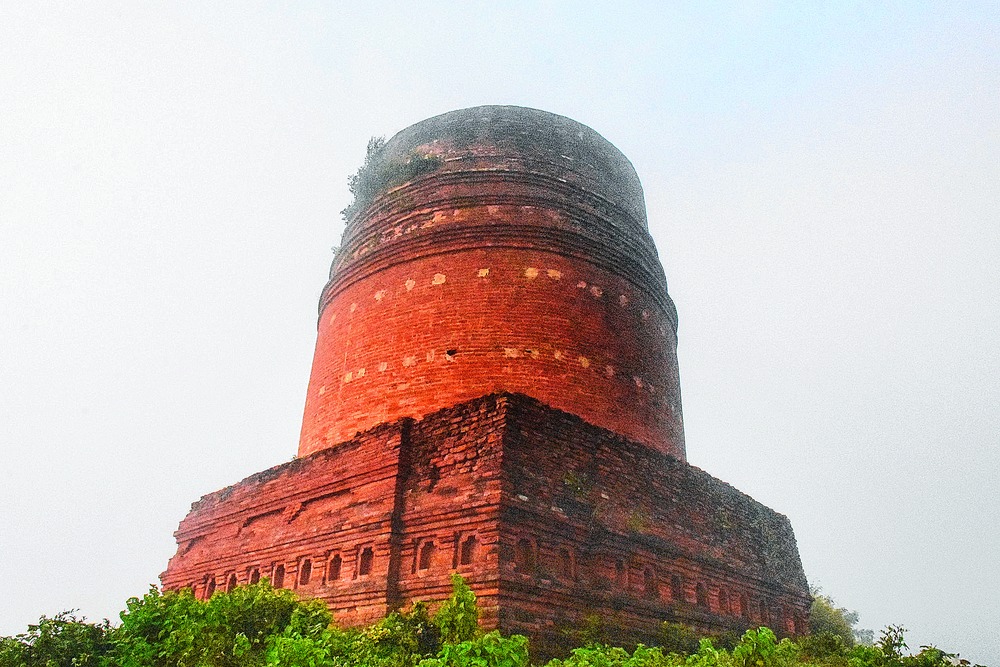
Patna, Sept. 29: The Archaeological Survey of India (ASI) says it has completed restoration of a part of an ancient Mauryan stupa at Giriyak in Nalanda. The restoration work began in 2011-12 and the cylindrical pillar of the stupa has been restored in the first phase.
"Remains of Mauryan (third to first century BC), Gupta (fourth-fifth century AD) and Pala (eighth-twelfth century AD) period have been found in the stupa. We have completed the restoration work on the 30ft-tall pillar in the stupa and work on remaining parts is still on," said Radha Casto, a conservationist at the ASI involved with the restoration work.
The stupa at Giriyak is located on the eastern end of Rajgir, around 100km east of Patna.
Residents claim that the stupa is visible from as far as 15km on a clear day. Because of the size, shape and magnificence of the cylindrical stupa, many legends and folklore have been associated with it.
Locally, the cylindrical pillar on the stupa is also known as Jarasandha ka Baithka (sitting place of Jarasandha. Jarasandha was a powerful Chandravanshi king of Magadh. He was the son of a king named Brihadratha).
"The stupa had a large cavity in its middle, believed to be a scar left by some treasure-hunter. The cavity was first noticed by a British official of the East India Company, Hamilton Buchanan, in 1811. The cavity in the pillar has now been filled. The surface of the stupa, which had an uneven surface because of decay and vandalisation, has now been covered by a layer of brick covering the entire cylindrical part of the stupa," said an ASI official.
The official added: "The stupa is now approximately 30ft tall but in its prime as conjectured by Alexander Cunningham, the stupa must have been not less than 55ft tall. Archaeological remains suggest that at some point of time, it could have been a flourishing monastery."
Though residents have hailed the restoration works, demand has also been made for improved access to the stupa. "The hill is around 750ft high and very steep. The 400m path leading to the top is not completely safe for the pilgrims. At certain section of the path, one has to literally crawl. Apart from restoration of the stupa, there is also a need to develop the access path to the stupa," said Deepak Anand, a heritage scholar at Nalanda.
"All the beautiful architectural marvels that once dotted this landscape are now unfortunately lost or are buried under the layers of biomass and now villages settled over them. Fortunately, stupas and ancient remains on the top of the many hills of Magadh have survived to remind us of our glorious past. It is very unfortunate that revitalisation of this and many such sacred remains is very slow," added Deepak.










